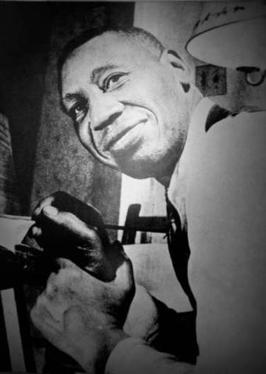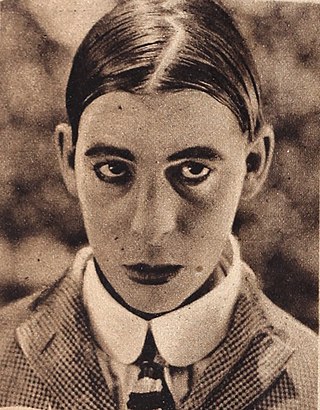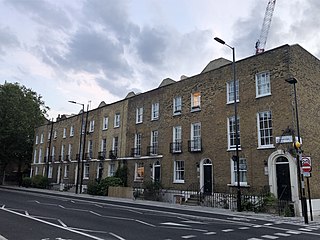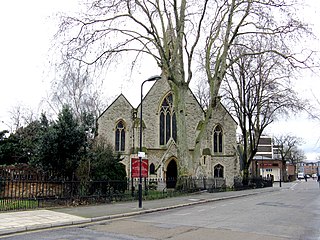
Wookey Hole Caves are a series of limestone caverns, a show cave and tourist attraction in the village of Wookey Hole on the southern edge of the Mendip Hills near Wells in Somerset, England. The River Axe flows through the cave. It is a Site of Special Scientific Interest (SSSI) for both biological and geological reasons. Wookey Hole cave is a "solutional cave", one that is formed by a process of weathering in which the natural acid in groundwater dissolves the rocks. Some water originates as rain that flows into streams on impervious rocks on the plateau before sinking at the limestone boundary into cave systems such as Swildon's Hole, Eastwater Cavern and St Cuthbert's Swallet; the rest is rain that percolates directly through the limestone. The temperature in the caves is a constant 11 °C (52 °F).

Lorenzo Lotto was an Italian painter, draughtsman, and illustrator, traditionally placed in the Venetian school, though much of his career was spent in other north Italian cities. He painted mainly altarpieces, religious subjects and portraits. He was active during the High Renaissance and the first half of the Mannerist period, but his work maintained a generally similar High Renaissance style throughout his career, although his nervous and eccentric posings and distortions represented a transitional stage to the Florentine and Roman Mannerists.

Andrei Rublev was a Russian icon painter. He is considered to be one of the greatest medieval Russian painters of Orthodox Christian icons and frescos.

Forest Hill is a district of the London Borough of Lewisham in south east London, England, on the South Circular Road, which is home to the Horniman Museum.

Horace Pippin was a self-taught American artist who painted a range of themes, including scenes inspired by his service in World War I, landscapes, portraits, and biblical subjects. Some of his best-known works address the U.S.'s history of slavery and racial segregation. He was the first Black artist to be the subject of a monograph, Selden Rodman's Horace Pippin, A Negro Painter in America (1947), and the New York Times eulogized him as the "most important Negro painter" in American history. He is buried at Chestnut Grove Cemetery Annex in West Goshen Township, Pennsylvania. A Pennsylvania State historical Marker at 327 Gay Street, West Chester, Pennsylvania, identifies his home at the time of his death and commemorates his accomplishments.

Hackney Central is a sub-district of Hackney in the London Borough of Hackney in London, England and is four miles (6.4 km) northeast of Charing Cross.

Lucio Fontana was an Argentine-Italian painter, sculptor and theorist. He's known as the founder of Spatialism and exponent of abstract painting as the first known artist to slash his canvases - which symbolizes an utter rejection of all prerequisites of art.

Wookey Hole is a village in Somerset, England. It is the location of the Wookey Hole show caves.

Don Barclay was an American actor, artist and caricaturist whose many roles stretched the period from the Keystone Cops in 1915 to Mary Poppins in 1964 and whose many paintings and caricatures of celebrities filled establishments worldwide and are archived in the Library of Congress.

The Trinity is an icon created by Russian painter Andrei Rublev in the early 15th century. It is his most famous work and the most famous of all Russian icons, and it is regarded as one of the highest achievements of Russian art. Scholars believe that it is one of only two works of art that can be attributed to Rublev with any sort of certainty.

Haggerston is an area in London, England and is located in the London Borough of Hackney. It is in East London and part of the East End. There is an electoral ward called Haggerston within the borough.

The Wells and Mendip Museum is a museum in the city of Wells. It is a registered charity and an accredited member of the Museums, Libraries and Archives Council. The exhibits include items of local history and archaeological finds.

The Ecumenical Council is a surrealist painting by Spanish artist Salvador Dalí completed in 1960. It is one of his masterpieces, taking two years to complete and very large at 299.7 by 254 centimetres. The painting is a complex assemblage of art historical references and religious scenes emphasizing Catholic symbolism.

David Gee was an English oil painter who took his inspiration from the local area.

Holy Trinity Church, Dalston, also known as the Clowns’ Church, is a Church of England parish church in Beechwood Road in the London Borough of Hackney. It is in the parish of Holy Trinity with St Philip Dalston and All Saints Church, Haggerston.

All Saints Church, Haggerston, also Church of All Saints, is an Anglican church in Livermere Road, near the junction with Haggerston Road, in Haggerston in London Borough of Hackney, east London. It is part of a parish with Holy Trinity Church and St Philip Dalston.
Charles d’Orville Pilkington Jackson RSA, FRBS, FRSA was a British sculptor prominent in Scotland in the 20th century. Throughout his career he worked closely with the architect Sir Robert Lorimer. He is most noteworthy for his creation of one of Scotland's most iconic landmarks, the statue of Robert the Bruce at Bannockburn.

Holy Trinity Church is a heritage-listed Anglican church at 141 Brookes Street, Fortitude Valley, City of Brisbane, Queensland, Australia. It is the second church on that site. It was designed by Francis Drummond Greville Stanley built from 1876 to 1877 by James Robinson. It was modified in 1920–1921, 1925 and 1929. It was added to the Queensland Heritage Register on 21 October 1992.
David Roualeyn Findlater "Roly" Bain was an English priest and clown who preached and performed as Holy Roly. He helped set up the organisation Holy Fools.
Shelota is a rural locality and the administrative center of Shelotskoye Rural Settlement, Verkhovazhsky District, Vologda Oblast, Russia. The population was 401 as of 2019. There are 11 streets.


















